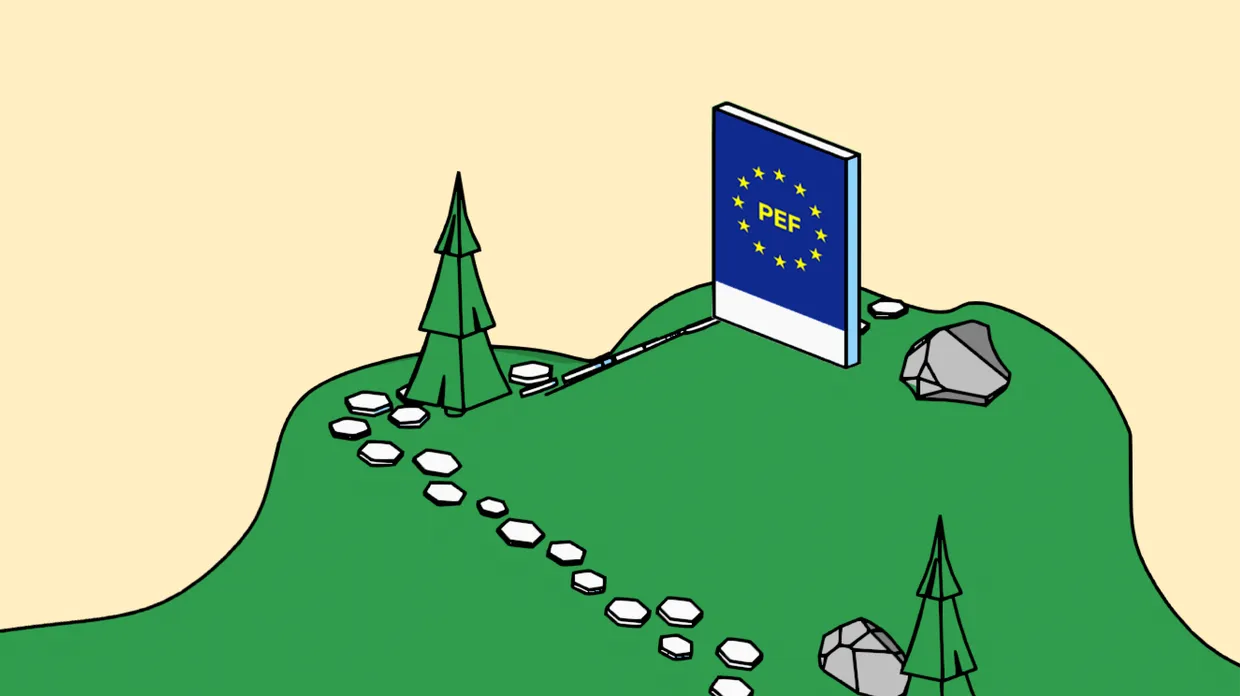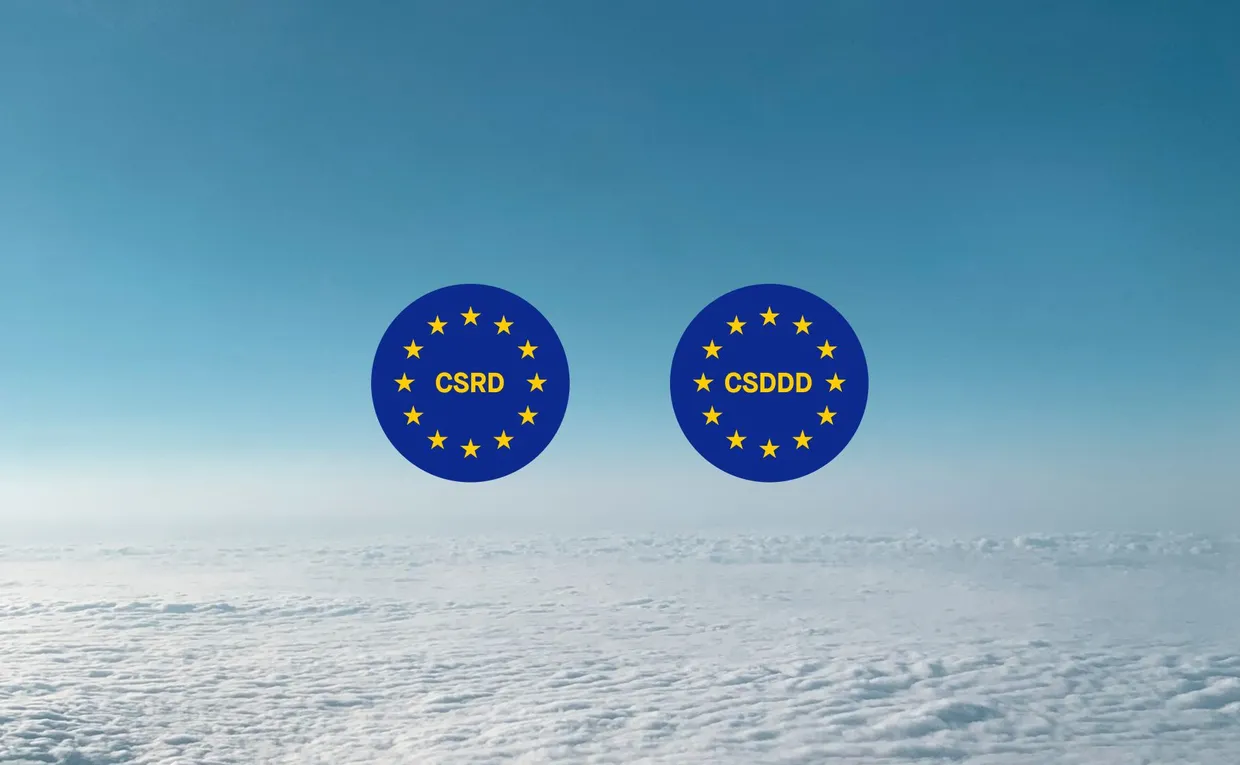The product environmental footprint (PEF) is a European Commission initiative that aims to model the environmental impacts of a good or service throughout its entire life cycle. We offer an overview of what companies need to know about it.
This takes into account supply chain activities, from raw materials extraction and manufacture, through to use of the product and its disposal. A PEF model should consider the environmental impacts of materials and energy flows, in addition to emissions and waste streams.
The European Commission aims to develop a harmonized EU-wide methodology to quantify product environmental footprint, including specific rules for product categories.
Why is calculating a PEF useful for companies?
By calculating a product environmental footprint, your company can understand more about the environmental impact of the products that it buys and uses. This information can help you to make better purchasing decisions, such as buying materials and/or products with a lower carbon footprint, and to reduce your overall emissions, while identifying potential cost savings.
When should a company do a PEF assessment?
A PEF assessment can be carried out as part of your company’s overall environmental reporting activity. For example, you may also wish to calculate your Scope 1, 2 and 3 emissions – of which PEF plays a part. See the below explanations for Scope 1-3 emissions.
Scope 1 emissions
Direct emissions from owned or controlled sources. It is divided into four groups: stationary combustion (e.g fuels, heating sources), mobile combustion (company vehicles), fugitive emissions (leaks during production) and process emissions.
Scope 2 emissions
Indirect carbon emissions from the consumption of purchased electricity, heat, or steam.
Scope 3 emissions
Indirect greenhouse gas emissions that come from sources not directly controlled by your company, but that are still a result of its sold products or services. These emissions can occur at different stages of a product or service lifecycle, such as the extraction and processing of raw materials, transportation and distribution of goods, or their use and disposal by consumers.
Are there other existing methods similar to PEF being developed?
Other related methodologies are also being developed in Europe, such as the Circular Footprint Formula (CFF) that models both the recycled content of products and the end-of-life of materials, through landfill, incineration, and recycling.
What are the PEF category rules in Europe?
Given that there are a huge range of products made in the world, from beer and t-shirts to pasta and pet food, it can be confusing to know how to apply the PEF to a particular use case. This is where the Product Environmental Footprint Category Rules (PEFCRs) come in.
These rules lay out a consistent set of measurement standards to calculate the relevant environmental information of similar products within the same category. Existing categories span products as diverse as beer, leather and pet food, to wine, IT equipment and decorative paints. The category rules identify benchmarks for each of these categories, helping your company to draw up its PEF across each of them.
The PEF category rules can also help you to compare and contrast different product categories, provided the products are capable of fulfilling the same function. In this way, you can calculate the environmental footprint of beer compared to wine, for example. Or look at your company’s carbon footprint from making decorative paints as opposed to buying and disposing of IT equipment.
Currently available PEFCRs:
The European Commission has developed PEFCRs for the following categories. This includes a Life Cycle Inventory for each and guidance on how to report against them.
-
Beer
-
Dairy
-
Decorative Paints
-
Household liquid laundry detergents
-
Hot and cold water supply pipe systems
-
Intermediate paper product
-
Animal feed
-
IT equipment
-
Leather
-
Metal
-
Packed water
-
Pasta
-
Pet food
-
PV electricity production
-
Rechargeable batteries
-
T-shirts
-
Thermal insulation
-
Uninterrupted power
-
Wine
How is a PEF calculated?
Your company can calculate the product environmental footprint (PEF) of a particular product it produces or buys and sells by considering the full life cycle of how that product has been made, distributed, stored, used and disposed of.
Depending on whether your company is a manufacturer that makes products, or a retailer that buys and sells products, you will interact with a product at different moments of its life cycle journey. But to calculate a PEF, you need to consider the full life cycle of a product on its journey from creation to disposal, and the associated environmental impacts.
What is the Life Cycle Assessment Methodology for calculating life cycle environmental performance?
The Life cycle impact Assessment Methodology for a PEF considers the full life cycle of how a product is made, distributed, used and disposed of when calculating its environmental impact.
The GHG Protocol Product Life Cycle Accounting method can be used to carry this out and to publicly report the GHG emissions associated with a specific product that you design, manufacture, sell, purchase or use. This is an internationally accepted method and is a great way for you to identify the best GHG reduction opportunities that your company can take.
Worldwide standards for calculating an LCA (Life Cycle Assessment) are:
· ISO 14040: Describes the principles and frameworks for life cycle assessments
· ISO 14044: Specifies requirements and offers guidelines for life cycle assessments
How can Sweep help to calculate the environmental performance of a product?
You can use Sweep to help calculate a product environmental footprint (PEF), in addition to a product’s emission factor and carbon intensity.
Our tool helps you to define your product system boundaries – meaning all the activities, processes and suppliers involved in producing a product and delivering it to an end user. Sweep’s survey functionality helps you to efficiently collect climate data from across your entire value chain, allowing you to build a robust estimate of the carbon footprint of a particular product and to give you greater purchasing power.



